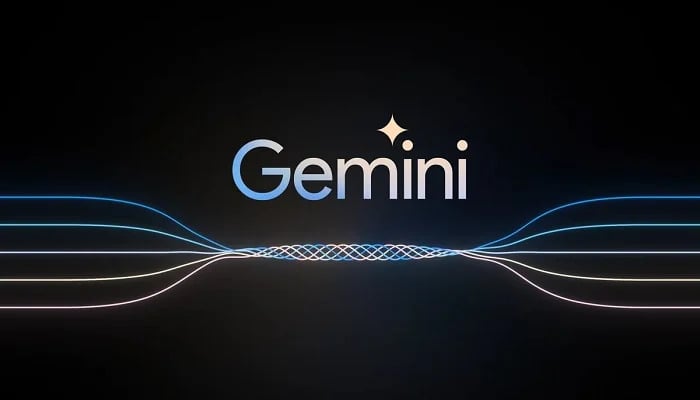
The image shows Gemini written on black background. — Google
Apart from using its Gemini, a generative artificial intelligence (AI) chatbot, to augment the performance of its native apps and services, Google also offers Gemini's language learning models (LLMs) to third-party developers to integrate into their apps and services.
Given that there should be some veracity in the rumour which has suggested that tech giant Apple is in talks with Google to license Gemini for iPhone. Gemini was originally launched last year as Google Bard and got rebranded last month as Gemini.
Citing a Bloomberg report, 9to5Google reported that there are “active negotiations to let Apple license Gemini, Google’s set of generative AI models, to power some new features coming to the iPhone software this year.” The report further states that the iPhone maker has also had talks with OpenAI.
Read more: How to use Google Gemini? All you need to know
Apple's central outlook of the negotiations with Google is to collaborate on cloud-based generative AI, with a separate report claiming that Gemini could be used in iPhones for text and image generation.
The development has emerged at a time when Apple is itself working to offer on-device AI models and capabilities integrated in the upcoming iOS 18.
As the development around the negotiations has not taken a solid shape, there's no official word as to how will the deal be branded. However, if comes to a positive conclusion, the integration of Gemini AI into iPhones would mark an exceptional step to widen existing ties between Google and Apple.
Meanwhile, the search giant last month joined hands with Samsung to make Gemini lead summarisation features in the Galaxy S24’s notes and voice recording apps, and keyboard.
The Korean smartphone maker is already exploiting Imagen 2 text-to-image diffusion for a generative editing feature in the photo gallery app. Those existing AI features require server-side processing, however, Samsung has also employed an on-device version of Gemini.
Google Gemini versions
Google provides Gemini in three different sizes, with Pro being the most commonly used version for both first and third-party apps. Gemini 1.0 Pro is the engine behind the free version of gemini.google.com, while 1.0 Ultra is utilised in the paid Gemini Advanced tier.
Gemini 1.0 is currently in stable release, but Google previewed Gemini 1.5 in mid-February, which includes a significantly expanded context window for better information absorption. This enhancement aims to make the “output more consistent, relevant and useful.”
- Gemini Ultra: Largest and most capable model for highly complex tasks
- Gemini Pro: Best model for scaling across a wide range of tasks
- Gemini Nano: Most efficient model for on-device tasks
















